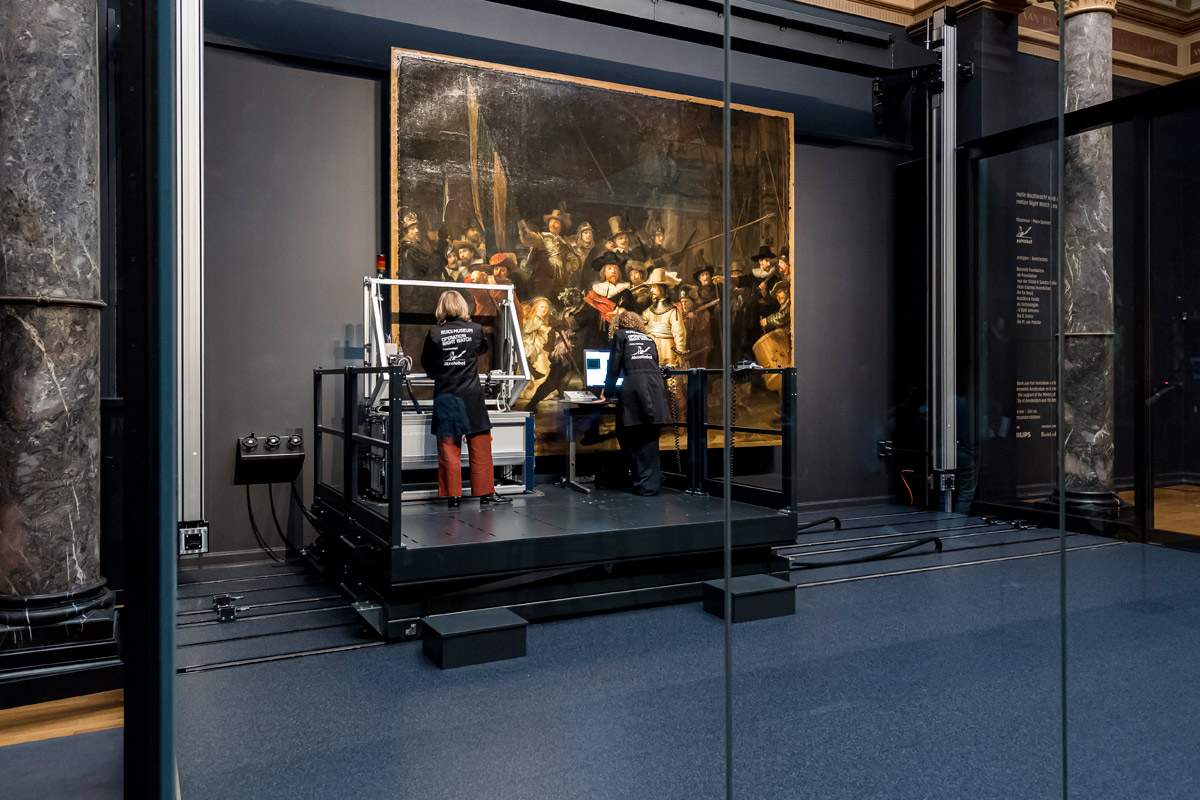Among the initiatives that the Netherlands is dedicating to anniversary number 350 of the death of Rembrandt van Rijn (Leiden, 1606 - Amsterdam, 1669) is the largest-ever restoration of the Dutch artist’s great masterpiece, the Night Watch, created in 1642 and housed at the Rijksmuseum in Amsterdam. Never before has the famous painting undergone such a thorough research and conservation project: in fact, the goal of the intervention is precisely to ensure the Night Watch’s long-term preservation. The study will also serve to delve into aspects related to the commissioning of the work, the materials used by Rembrandt and his technique, and again there will be investigations into previous interventions, and hypotheses will be formulated on the conditions that the work might take on in the future. To achieve these results, advanced and technological research methods (including artificial intelligence) will be used, as well as archival and art-historical research. And during all the operations, the Night Watch will be disassembled from its frame and hoisted above a special easel: two platforms will allow experts to study the impressive painting, but not only that: the public will be able to follow everything online starting July 8, at https://www.rijksmuseum.nl/en/nightwatch. The “laboratory” prepared for the occasion will be visible thanks to a glass chamber specially made by French architect Jean Michel Wilmotte.
Among the investigations that will be carried out on the painting will be X-ray fluorescence (which will be used to create a millimeter-by-millimeter scan of the work: the chemical elements of the painting can then be analyzed to see what pigments Rembrandt used, and it will be possible to see if the painter made any changes during the work) and infrared spectroscopy to determine the condition of the painting. Next, 12,500 photographs will be taken at very high resolution (180 to 5 micrometers): this is unique because no painting has been photographed at such a high resolution so far. These photographs will make it possible to detect parts of pigment not normally visible to the naked eye.
The team that will undertake the work on the Night Watch is composed of twenty elements, including scientists, conservators, curators, and photographers, all from within the Rijksmuseum. The Amsterdam museum will also enlist the cooperation of the Netherlands Cultural Heritage Agency (RCE), Delft University of Technology, the University of Amsterdam Medical Center, the University of Antwerp, and the National Gallery in Washington. All thanks to the support of the Ministry of Education, Culture and Science of the Netherlands, the Municipality of Amsterdam, Founder Philips and the main sponsors (ING, BankGiro Loterij and KPN), and with the financial support of several entities: the Bennink Foundation, the PACCAR Foundation, Piet van der Slikke & Sandra Swelheim, the American Express Foundation, the De Rooij family, Het AutoBinck Fonds, Segula Technologies, Dina & Kjell Johnsen, the D. Ermia, the M. van Poecke family, Henry M. Holterman Fonds, Irma Theodora Fonds, Luca Fonds, Piek-den Hartog Fonds, Stichting Zabawas, Cevat Fonds, Johanna Kast-Michel Fonds, Marjorie & Jeffrey A. Rosen, Stichting Thurkowfonds, and the Night Watch Fund.
 |
| The largest-ever restoration of "The Night Watch," Rembrandt's great masterpiece, begins in Amsterdam. And it can be followed online |
Warning: the translation into English of the original Italian article was created using automatic tools. We undertake to review all articles, but we do not guarantee the total absence of inaccuracies in the translation due to the program. You can find the original by clicking on the ITA button. If you find any mistake,please contact us.